Handbook of Dialysis Therapy 6th Edition by Allen R. Nissenson, ISBN-13: 978-0323791359
[PDF eBook eTextbook]
- Publisher: Elsevier; 6th edition (September 12, 2022)
- Language: English
- 944 pages
- ISBN-10: 0323791352
- ISBN-13: 978-0323791359
Comprehensive, practical guidance for every member of the dialysis team.
Edited and written by top experts and pioneers in dialysis, Handbook of Dialysis Therapy, 6th Edition, provides the entire dialysis team with a comprehensive overview of this growing field. It covers traditional and advanced procedures, what pitfalls to expect and how to overcome them, and how best to treat various patient populations―all with a practical approach that can be directly applied to patient care. This must-have resource has been updated with the latest cutting-edge technology, dialysis techniques, and complications related to various diseases for both pediatric and adult patients.
– Explains complex dialysis concepts through abundant diagrams, photos, line drawings, and tables, while its readable, hands-on approach allows for quick review of key information.
– Covers both adult and pediatric patients in detail, and offers guidance on special populations such as the geriatric patients and the chronically ill.
– Features increased content on home-based dialysis modalities, new alternatives for establishing vascular access for hemodialysis, new protocols for reducing the risk of infection and complications, and advancements in establishing and managing peritoneal dialysis.
– Includes extensive pediatric content such as prevention and treatment of bone disease, management of anemia, assessing quality of life in pediatric patients undergoing dialysis, and immunizations in children undergoing dialysis.
– Defines the quality imperatives, roles, and responsibilities of dialysis facility medical directors and attending nephrologists.
– Updates nephrologists on the latest alternative dialysis modalities.
Table of Contents:
1) Demographics of the End-Stage Renal Disease Patient
2) Uremic Toxicity
3) Initiation of Dialysis Therapy
4) Urea Kinetic Modeling for Guiding Hemodialysis Therapy in Adults
5) The Dialysis Prescription
6) Selecting a Dialyzer: Technical and Clinical Considerations
7) Water Treatment Equipment for In-Center Hemodialysis
8) Dialysate Composition
9) Safety Monitors in Hemodialysis
10) Methods of Hemodialysis Anticoagulation
11) Common Clinical Problems During Hemodialysis
12) Hemofiltration and Hemodiafiltration
13) Wearable Artificial Kidney
14) Home Preparation and Installation for Home Hemodialysis
15) Arteriovenous Access for Hemodialysis in Adults
16) Cannulation of Arteriovenous Vascular Access: Science and Art
17) Central Venous Access for Hemodialysis
18) Non-Infectiious Complications from Vascular Access
19) Infectious Complications from Vascular Access
20) Determination of Continuous Ambulatory Peritoneal Dialysis and Automated Peritoneal Dialysis Prescriptions
21) Peritoneal Dialysis Cyclers and Other Mechanical Devices
22) Peritoneal Dialysis Solutions
23) Solute Management with PD
24) Volume Management with Peritoneal Dialysis
25) Peritoneal Access Devices, Placement Techniques, and Maintenance
26) Peritoneal Catheter Exit-Site and Tunnel Infections
27) Peritonitis in Peritoneal Dialysis
28) Abdominal Hernias in Continuous Ambulatory Peritoneal Dialysis
29) Dialysate Leaks
30) Hydrothorax and Peritoneal Dialysis
31) Abdominal Catastrophes, Peritoneal Eosinophilia, and Other Unusual Events in Peritoneal Dialysis
32) Metabolic Complications of Peritoneal Dialysis
33) Peritoneal Membrane Dysfunction: Inadequate Solute Removal, Ultrafiltration Failure and Encapsulating Peritoneal Sclerosis
33) Acid-Base Homeostasis in Dialysis
34) Nutritional Management of Hemodialysis Patients
35) Intradialytic Parenteral Nutrition and Intraperitoneal Nutrition
36) Nutritional Management in Peritoneal Dialysis
37) Anemia and Its Treatment in ESKD Patients
38) Resistance to Erythropoiesis Stimulation Agent (ESA) Treatment
39) Chronic Kidney Disease-Mineral and Bone Disorder
40) Phosphate Management in Patients With End-Stage Renal Disease
41) Use of Vitamin D Sterols and Calcimimetics in Patients of ESRD
42) Parathyroidectomy
43) Acquired Cystic Kidney Disease
44) The Challenges of Blood Pressure Control in Dialysis Patients
45) Arrhythmias in Hemodialysis Patients
46) Management of Ischemic Heart Disease, Heart Failure, and Pericarditis in Hemodialysis Patients
47) Avoidance and Treatment of Cardiovascular Disease in Dialysis
48) Management of Dyslipidemia in Long-Term Dialysis Patients
49) END-STAGE KIDNEY FAILURE IN THE DIABETIC PATIENT
50) Care of Elderly Dialysis and End-Stage Kidney Disease Patients
51) Liver Disease and Gastrointestinal Disorders in Dialysis Patients
52) Abnormalities of Thyroid Function in Chronic Dialysis Patients
53) Care of the HIV-Infected Dialysis Patient
54) COVID-19 and Dialysis Patients
55) Psychosocial Issues in Dialysis Patients
56) Evaluation and Treatment of Sexual Dysfunction
57) Pregnancy in Dialysis Patients
58) Principles of Drug Usage in Dialysis Patients
59) Medication Management
60) Physical Activity, Function, and Exercise-based Rehabilitation for people on Dialysis
61) Physical, Psychosocial, and Vocational Rehabilitation of Patients Undergoing Long-Term Dialysis
62) Preventative Care in End-Stage Renal Disease
63) Ethical Considerations in the Care of Dialysis Patients: The New Paradigm
64) Improving Outcomes for End-Stage Renal Disease Patients: Shifting the Quality Paradigm
65) Quality, Safety, Accountability, and Medical Director Responsibilities
66) Application of Telemedicine to Patients with End-State Renal Disease
67) Convective Renal Replacement Therapies for Acute Kidney Injury
68) Anticoagulation for Continuous Renal Replacement Therapy (CRRT)
68) Vascular Access and PD Placement in Children
69) Treatment of Poisoning with Extracorporeal Methods
70) Vascular Access and PD Placement in Children
71) Infant Hemodialysis
72) Urea Kinetic Modeling for Hemodialysis Prescription in Children
72) Vascular Access and PD Placement in Children
73) Alternative HD Prescriptions in Children
74) Anticoagulation in Children Undergoing Hemodialysis, Continuous Renal Replacement Therapy or Apheresis Therapy
75) Prescribing Peritoneal Dialysis in Children
76) Nutritional Management of Children Undergoing Peritoneal Dialysis
77) Peritoneal Dialysis in Neonates and Infants
78) Dialysis in Inborn Errors of Metabolism
79) Neurocognitive Development in Children Undergoing Dialysis
80) Growth in Children with End-Stage Renal Disease
81) Adequacy of Peritoneal Dialysis/ Assessing Peritoneal Function in Pediatric Patients
82) Continuous Renal Replacement Therapy in Pediatric Patients
83) Prevention and Treatment of Bone Disease in Pediatric Dialysis Patients
84) Management of Anemia in Children Undergoing Dialysis
85) Prevention and Treatment of Cardiovascular Complications in Children Undergoing Dialysis
86) Infectious Complications in Children Undergoing Dialysis
87) HIF-I in the Treatment of Anemia in Kidney Patients
87) Caring for the Teenager in an Adult Unit
88) Use of Erythropoietic-Stiumulating Agents in Hemodialysis Patients
88) Iron Use in End-Stage Renal Disease
Dr. Richard E. Fine received his Bachelor’s and PhD degrees in Biochemistry from University of California at Berkeley and Brandeis University respectively. He then was a postdoctoral fellow in the laboratory of Francis Crick and Sydney Brenner at the Laboratory of Molecular Biology in Cambridge, U.K. During this period he and his colleague, Dennis Bray provided the first evidence for actin in growing neurons. Dr. Fine became an Assistant Professor of Physiology and Biochemistry at Boston University School of Medicine and demonstrated the existence of actin regulatory molecules, tropomyosin and troponin C in growing neurons, and he subsequently became interested in the role of clathrin coated vesicles in endocytic and exocytic processes in neurons and in other tissues. He also isolated and characterized vasopressin receptors, demonstrated for the first time that a large molecular, transferrin, can cross the blood brain barrier. Our lab in collaboration with Dr. Ken Kosik were the first to show that an antisense oligonucleotide can be used in vivo to block the synthesis of a single protein. Using the rabbit retina we were able to show that an antisense nucleotide against the kinesin mRNA can block the critical role of kinesin in the transport of synaptic vesicles, neuropeptide containing vesicles and vesicles destined for the plasma membrane. In recent years Dr. Fine’s laboratory has focused on the role of the amyloid beta peptide in Alzheimer’s disease especially in brain capillary endothelium. Also he has recently focused on the role of a mutant protein VPS35, a component of the retromer in Parkinson’s and Alzheimer’s diseases. During his career he has received over $25,000,000 in grant funding, have served on both NIH and VA review panels and authored or co-authored over 100 research papers.
What makes us different?
• Instant Download
• Always Competitive Pricing
• 100% Privacy
• FREE Sample Available
• 24-7 LIVE Customer Support

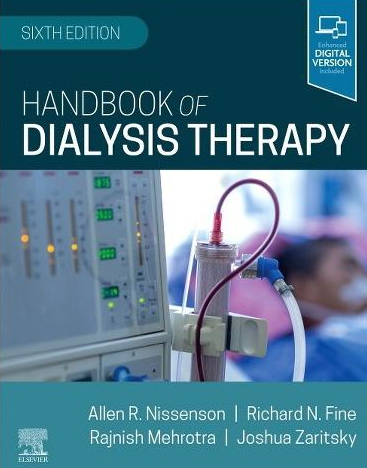
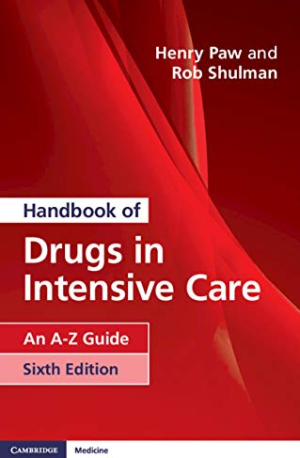

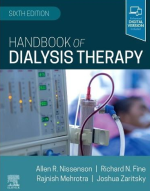

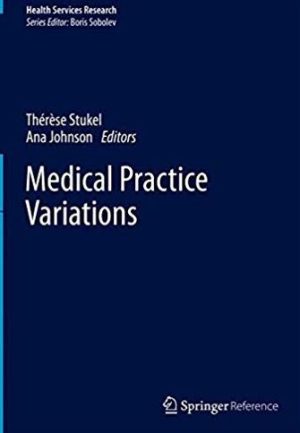

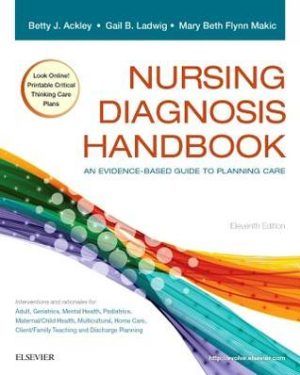
Reviews
There are no reviews yet.